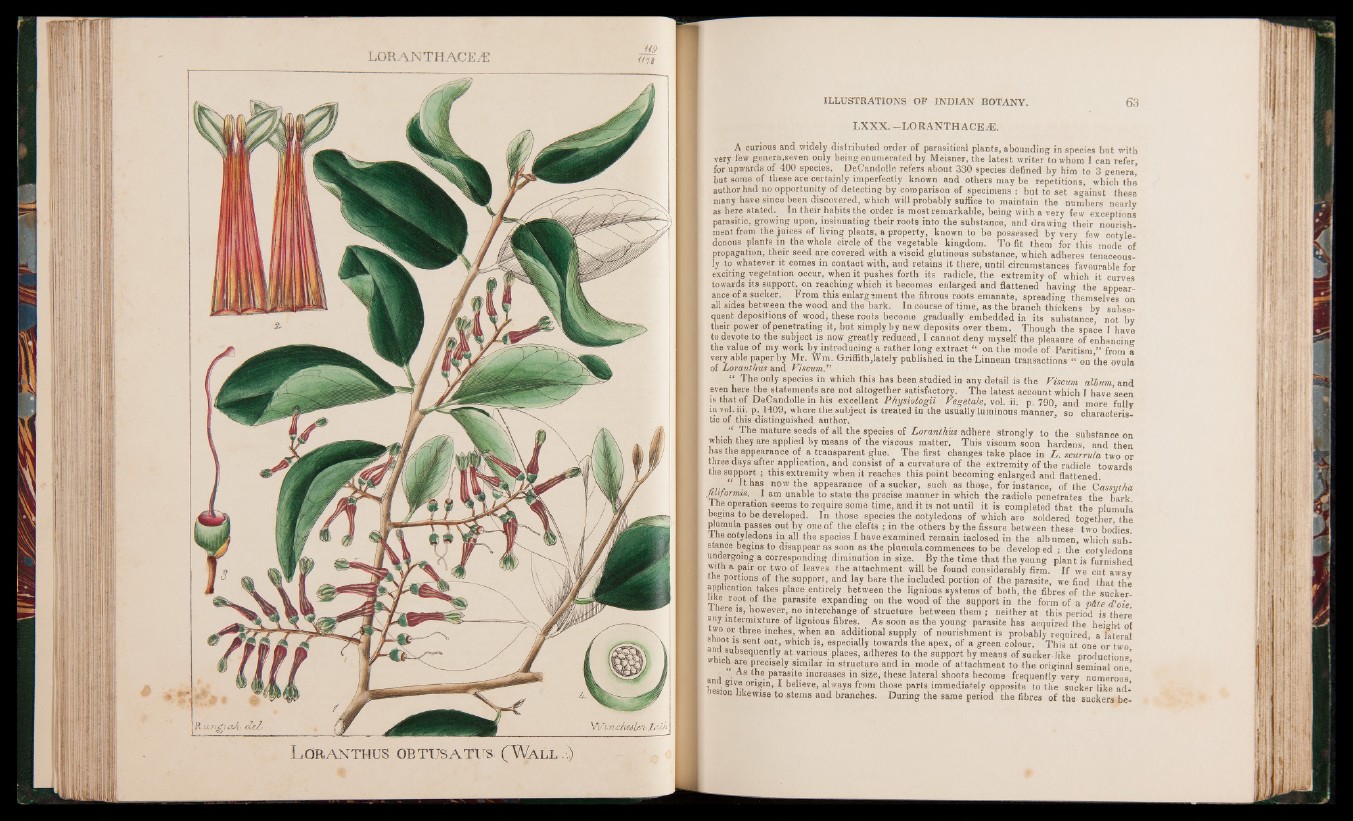
LORANTHUS OBTT'SATl'S f WALL ..)
LXXX. -LORANTHACEÆ.
A curious and widely distributed order of parasitical plants, abounding in species but with
very few genera,seven only being enumerated by Meisner, the latest writer to whom 1 can refer
for upwards of 400 species. DeCandolle refers about 330 species defined by him to 3 genera”
but some of these are certainly imperfectly known and others may be repetitions, which thé
author had no opportunity of detecting by comparison of specimens : but to set against these
many have since been discovered, which will probably suffice to maintain the numbers nearly
as here stated.^ In their habits the order is most remarkable, being with a very few exceptions
parasitic, growing upon, insinuating their roots into the substance, and drawing their nourishment
from the juices of living plants, a property, known to be possessed by very few cotyle-
donous plants in the whole circle of the vegetable kingdom. To fit them for this mode of
propagation, their seed are covered with a viscid glutinous substance, which adheres tenaceous-
ly to whatever it comes in contact with, and retains it there, until circumstances favourable for
exciting vegetation occur, when it pushes forth its radicle, the extremity of which it curves
towards its support, on reaching which it becomes enlarged and flattened having the appearance
of a sucker. From this enlargement the fibrous roots emanate, spreading themselves on
all sides between the wood and the bark. In course of time, as the branch thickens by subsequent
depositions of wood, these roots become gradually embedded in its substance not by
their power of penetrating it, but simply by new deposits over them. Though the space I have
to devote to the subject is now greatly reduced, I cannot deny myself the pleasure of enhancing
the value of my work by introducing a rather long extract “ on the mode of Paritism ” from a
very able paper by Mr. Wm. Griffith,lately published in the Linnean transactions “ on the ovula
of Loranthus and Viscum
“ The only species in which this has been studied in any detail is the Viscum album and
even here the statements are not altogether satisfactory. The latest account which I have seen
is that of DeCandolle in his excellent Physiotogii Vegetale, vol. ii. p. 790, and more fully
in vol. till p. 1409, where the subject is treated in the usually luminous manner’ so characteristic
of this distinguished author.